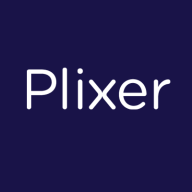

Nagios Core and Plixer Scrutinizer both compete in the network monitoring category. Plixer Scrutinizer might have the upper hand due to its detailed network traffic analysis and structured support options.
Features: Nagios Core offers extensive customization, flexibility, and integration of plugins, focusing on infrastructure monitoring with customizable notifications. Plixer Scrutinizer provides comprehensive network traffic analysis, data context enrichment, and integration with security products for efficient traffic monitoring.
Room for Improvement: Nagios Core has a steep learning curve, complex configurations, and limited built-in assistance, affecting scalability. Plixer Scrutinizer could improve its user interface, reporting process, and handling of high traffic volumes for complex configurations.
Ease of Deployment and Customer Service: Nagios Core predominantly requires on-premises deployment demanding user expertise and relies on community support. Plixer Scrutinizer offers structured support, easing deployment complexities with prompt technical aid through its licensing options.
Pricing and ROI: Nagios Core is free but requires an investment in skilled personnel, delivering ROI by minimizing server downtime. Plixer Scrutinizer uses a sensor-based licensing model, providing cost-effective network monitoring with competitive pricing and advantageous trial periods.
| Product | Market Share (%) |
|---|---|
| Nagios Core | 2.5% |
| Plixer Scrutinizer | 0.4% |
| Other | 97.1% |


| Company Size | Count |
|---|---|
| Small Business | 20 |
| Midsize Enterprise | 11 |
| Large Enterprise | 22 |
| Company Size | Count |
|---|---|
| Small Business | 4 |
| Midsize Enterprise | 2 |
| Large Enterprise | 8 |
This is IT infrastructure monitoring's industry-standard, open-source core. Free without professional support services.
The Scrutinizer incident response system leverages network traffic analytics to provide active monitoring, visualization, and reporting of network and security incidents. The system quickly delivers the rich forensic data needed by IT professionals to support fast and efficient incident response.
We monitor all Network Monitoring Software reviews to prevent fraudulent reviews and keep review quality high. We do not post reviews by company employees or direct competitors. We validate each review for authenticity via cross-reference with LinkedIn, and personal follow-up with the reviewer when necessary.